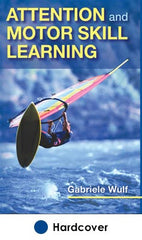Learning process when acquiring motor skills similar for all individuals
This is an excerpt from Attention and Motor Skill Learning by Gabriele Wulf.
Even though motor skills vary widely in type and complexity, the learning process that individuals go through when acquiring various motor skills is similar. Paul Fitts (1964; Fitts & Posner, 1967) has proposed three stages (or phases) of learning: the cognitive, associative, and autonomous stages (see table 1.1).The cognitive stage is characterized by the learner's trying to figure out what exactly needs to be done. Considerable cognitive activity is typically required in this stage, in which movements are controlled in a relatively conscious manner. Because learners sometimes use (overt or covert) self-talk, this stage has also been labeled the “verbal stage” (Adams, 1971).During this phase, learners often experiment with different strategies to find out which ones work or don't work in bringing them closer to the movement goal. Also, learners tend to pay attention to the step-by-step execution of the skill, which requires considerable attentional capacity. The result of using conscious control strategies is that the movement is relatively slow, abrupt, and inefficient and that performance is rather inconsistent.
Once the learner has acquired the basic movement pattern, the second, or associative, phase of learning begins. This phase is characterized by more subtle movement adjustments. The movement outcome is more reliable, and the movements are more consistent from trial to trial. Inefficient cocontractions are gradually reduced, and the movement becomes more economical. In addition, at least parts of the movement are controlled more automatically, and more attention can be directed to other aspects of performance.
After extensive practice, the performer reaches the autonomous phase (termed “motor stage” by Adams [1971]), which is characterized by fluent and seemingly effortless motions. Movements are not only accurate, with few or no errors, but also very consistent. In addition, movement production is very efficient and requires relatively little muscular energy. The skill is performed largely automatically at this stage, and movement execution requires little or no attention.
Thus, one thing that seems to change considerably as we gain more experience with a skill is the amount of attention that we need to dedicate to its execution. Some studies have looked more closely at how attentional demands change as individuals go through different phases of learning, and these are reviewed next. We will also see how the performance of motor skills is affected at different stages of expertise as a function of what individuals direct their attention to.
Table 1.1 Stages of Learning
| Stages of Learning | Characteristics | Attentional Demands |
| Cognitive (verbal) | Movements are slow, inconsistent, and inefficient | Large parts of the movement are controlled consciously |
| Considerable cognitive activity is required | ||
| Associative | Movements are more fluid, reliable, and efficient | Some parts of the movement are controlled consciously, some automatically |
| Less cognitive activity is required | ||
| Autonomous (motor) | Movements are accurate, consistent, and efficient | Movement is largely controlled automatically |
| Little or no cognitive activity is required |
This is an excerpt from Attention and Motor Skill Learning.
More Excerpts From Attention and Motor Skill Learning

Get the latest insights with regular newsletters, plus periodic product information and special insider offers.
JOIN NOW


